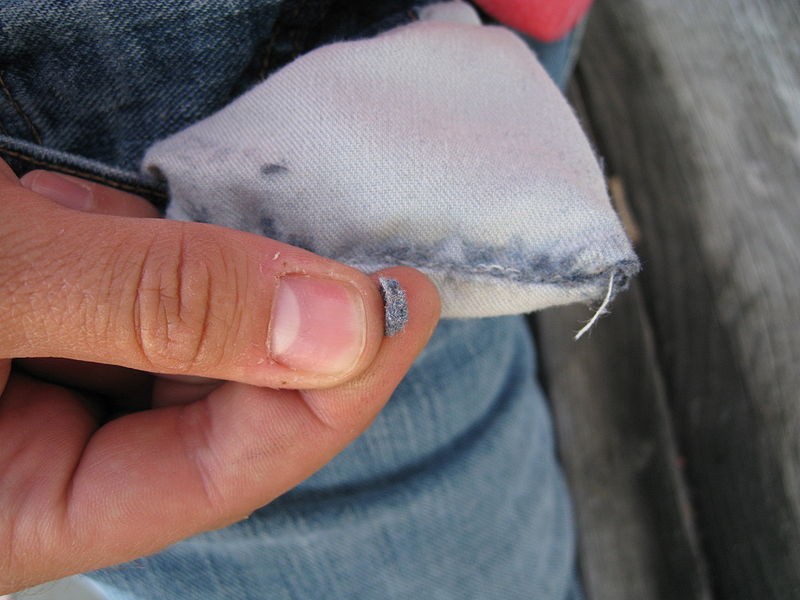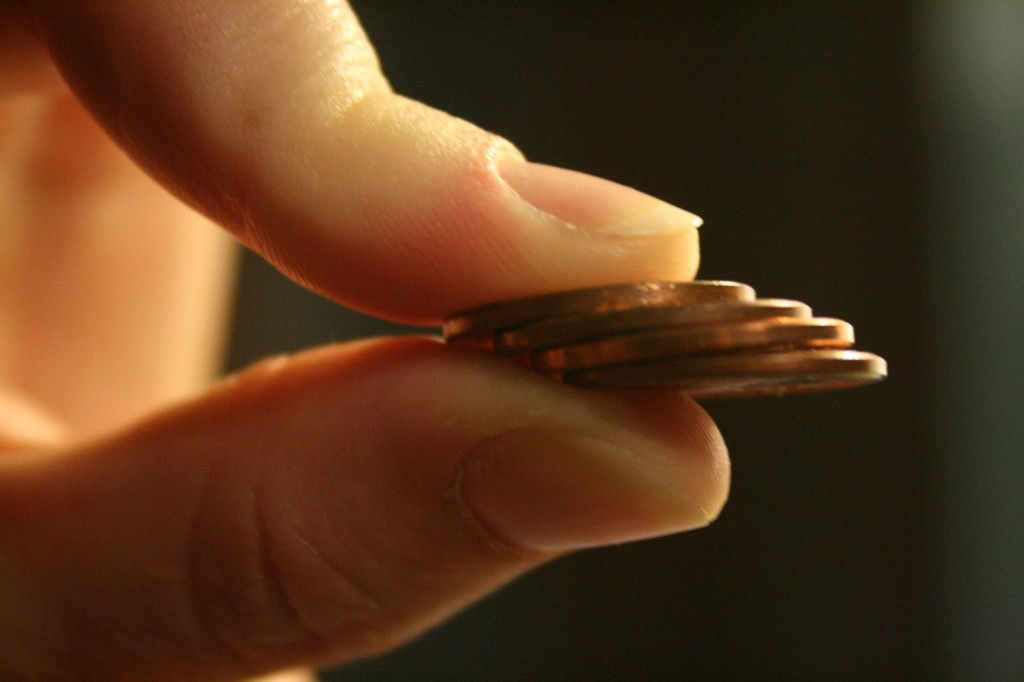By far our favorite punching bag here at Control Your Cash is Trent Hamm, the hyperfrugal crazy person who runs The Simple Dollar. 14 times a week, he writes about compulsive, creepy, maniacal methods for shaving undetectable amounts off your expenses. Meanwhile he writes next to nothing about how to increase your revenue, which is swell because we don’t need the competition.
In previous posts he’s recommended bypassing the toothpaste aisle at the drugstore so you can collect the ingredients to make your own inferior version, and also told female readers that they should never spend more than $3 on a swimsuit. When a commenter pointed out that $3 swimsuits don’t exist, Trent helpfully suggested that women swim in their underwear. Yet people still continue to read this corn-fed monster of impracticality, and not always for the undeniable comedic value. That he has any audience at all is testament to the axiom that stupidity begets stupidity. Also, people = sheep.
By the way, Trent Hamm didn’t suggest homemade toothpaste brewing as a fun craft project for the kids on a night when the TV and the internet are down. He suggests it as a legitimate way to save money. And dozens of his devotees cyber-chime in to nod their empty heads.
One of his latest money-saving tips is so bizarre, so utterly immersed in minutiae, so microscopically unhelpful, that we had to let it sink in for a few weeks before choosing the right way to poke fun at it. Here, we’ll let Trent take it away:
Several months ago, I was curious about how much heat was lost when I opened up the oven to inspect a dish cooking in there. I put an oven thermometer in the oven, waited until the dish I was cooking was almost finished (a casserole cooking at 400º), then opened the oven door for about ten seconds to inspect it.
During those ten seconds, the thermometer dropped almost 20º. When I closed the door, the temperature slowly returned to 400º, but during that period, the oven had to put in some extra work to return that heat.
How much? It’s really difficult to exactly calculate that without a meter running specifically for the oven. My best estimate, using a lot of math and thermodynamics, is that you lose about 2¢ worth of energy every time you open the oven door.
My solution? I turn on the oven light when I’m cooking anything in the oven. That way, I just lean over and check what I’m cooking without opening the oven door.
The light bulb uses less than a cent of energy per hour of use …”
If your recipe says “Preheat the oven to 400º” and then later says “Bake for 30 minutes,” don’t preheat the oven at all. Instead, put your food in the oven, then set the temperature to 400º. Then, add about half of the preheat time to the cooking time. Why? When you open a preheated oven to put in your dish, it’s no different than opening the oven to check the food near the end of the cooking time. You lose that 2¢.
(Italics and boldfacing ours.)
“Damn it, don’t you people understand? Those 2¢ increments are valuable! You wasteful reprobates probably keep your toasters plugged in when you’re not using them, too.”*
And if that doesn’t beat all, this will. Here’s another excerpt from The Simple Dollar archives, from February 26, 2009:
There’s also a group of what I would call “frugality extremists.” These are the Ziploc bag washers, the people who will gladly invest quite a bit of time to save a dollar or two. I find these people and their ideas interesting, but not necessarily applicable to my life.
Got that, everyone? Washing a Ziploc bag is going over the line, but calculating that it costs 2¢ every time you open your oven door to check on what you’re cooking is completely normal. Trent Hamm, you’re magical. Since we have to pick a Retard of the Month 12 times a year (a calculation which required lots of math, not so much thermodynamics), promise us you’ll never change.
*Of course, he’s written about this too.




